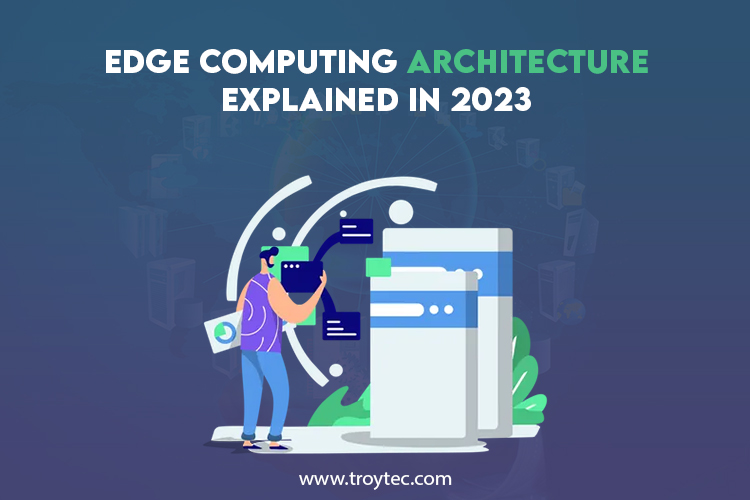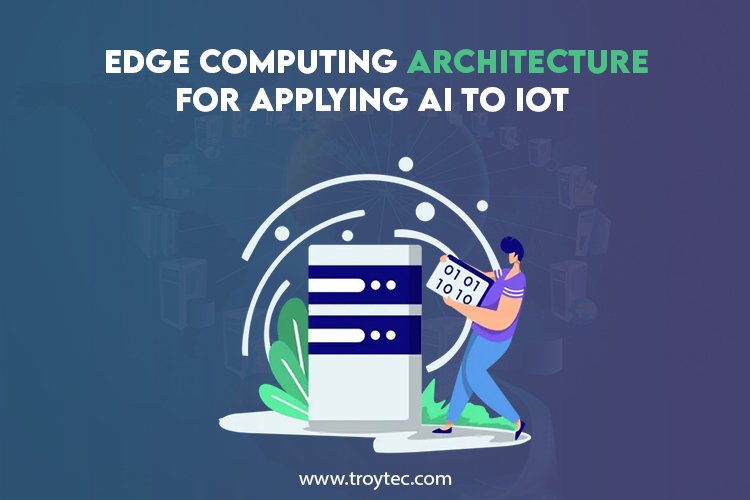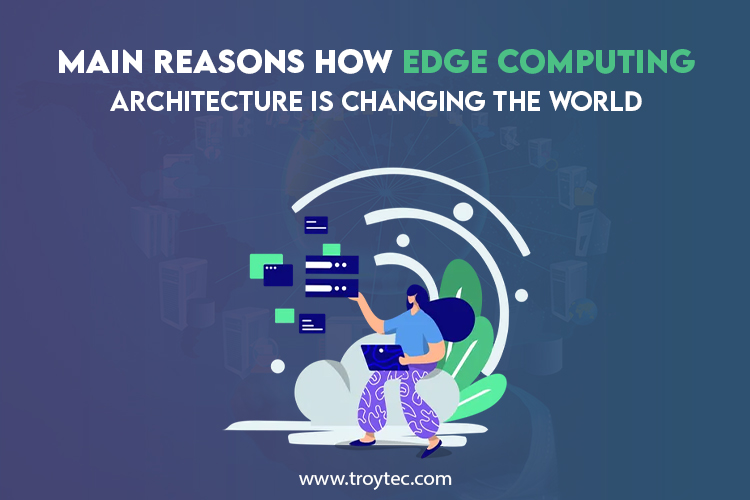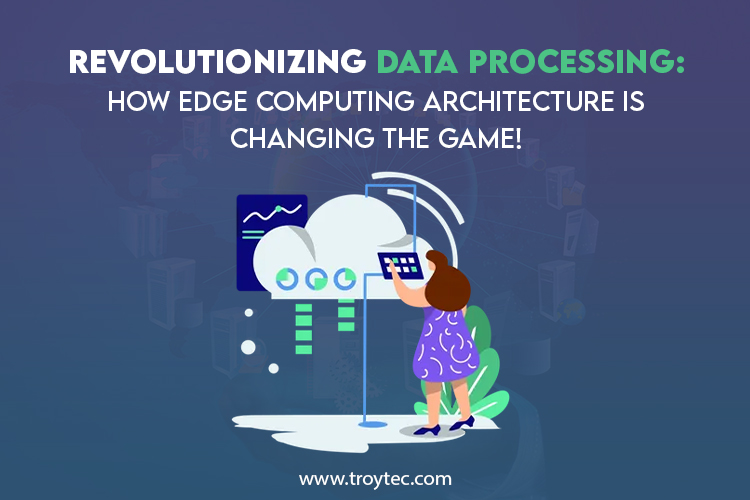Revolutionizing Data Processing: How Edge Computing Architecture is Changing the Game!
Edge computing architecture is a fresh cloud computing model that recently received much attention. The computing approach aims to bring data processing, storage, and interaction closer to the data source, allowing quicker and more convenient data processing and analysis. This article delves into the foundations of edge computing architecture, including its components, benefits, and challenges.
The article will distinguish between traditional cloud technology and edge computing, emphasizing the latter’s distinct advantages, such as low response time, high bandwidth, and lower data transmission costs.
Keep exploring the article to learn amazing things about edge computing architecture, and we will also learn more about IoT edge computing architecture.
What is Edge Computing?
Edge computing is computing that takes place at the position nearest to a system’s data or ends user—where data is coming from or continuing to. Edge architecture enables faster processing by reducing processing time and lag. Edge-running applications and initiatives can respond to user interplay and information more quickly and effectively, resulting in a better customer experience and significantly improved performance.
For example, suppose you’re a shipping company. In that case, your “edge” could be situated on the docks where consignments are removed, allowing for near-real-time analysis and processing of your supply, leading to better data-driven judgment.
Correspondingly, your edge could be made up of IoT devices, such as point-of-sale stations in a store. These “edge devices” process the data at the spot of use, sending only what is required to the hybrid cloud.
Edge devices work without delay because data is available and analyzed in near real-time, as the machine does not depend on a centralized location or cloud for computation. Applications in the clo ud use AI technology to learn from network edge data and modify recommendations, functions, and processes.
Edge Computing Architecture Explained in 2023

Here is more detail of edge computing architecture explained in 2023:
An equivalent to cloud computing technology is edge computing architecture. Edge computing refers to an environment of network elements distributed from an enterprise’s data center’s centralized location upwards, and all remote sites are part of an institution’s holistic deployment.
It includes computation and storage functionality, apps, equipment, sensors, and network access to a central cloud data center or cloud, which may be used with Internet of Things (IoT) equipment.
Devices and sensors collect information. They need more frequency band, recollection, processing power and functionality, and computer technology resources to obtain, process, and implement the information in real time with little assistance from other circuit areas. There is, nevertheless, some network connectivity that enables communication.
Edge Computing Architecture for Applying AI to IoT
The Internet of Things, or IoT, has been popular in the last few years, with more connected systems being hosted daily. As a result, the significant volume of data generated by these systems has surged, which can be used to enable artificial intelligence or AI application forms. However, the large mass of generated data can make applying AI algorithms difficult. Edge computing comes into play here. IoT edge computing architecture is the best thing in 2023.

Edge computing is a well-distributed computing system that relocated computing and data storage closer to the devices and sensors that generate the critical data.
It reduces the quantity of information that must be transferred to the cloud or a centralized data hub for processing, allowing for real-time data analysis and action. It is beneficial for IoT-based Applications, where development occurs with a considerable amount of data that must process rapidly.
An edge computing architecture for applying AI to IoT has several important ingredients. The first one is the actual edge devices. Mobile cameras, sensors, and camera drones and robots are great examples of such devices. Before transmitting data to the edge node, the edge sensors gather information and execute basic pre-processing.
What is Edge Computing Architecture for Mobile Crowdsensing?
Mobile crowdsensing has recently emerged as a key method for collecting big data in various application areas, including environmental control, public transit, healthcare, and smart cities. Traditional cloud-based plans or strategies have restrictions regarding speed latency, internet speed, and energy leverage due to the remarkable growth of mobile phones and the developing demands for real-time data analysis. To address these issues, edge computing architecture has demonstrated the best potential.
The perception, edge, and cloud layers are typically the three layers of an edge-computing architecture for mobile crowdsensing. The sensing layer is in charge of gathering data from mobile devices’ sensors. The edge layer processes and analyses the collected data, while the cloud layer provides computation power and storage for stashing and processing the data.
The edge computing architecture for mobile crowdsensing provides several benefits, such as low latency, lowered network bandwidth, and increased energy efficiency. It also offers high confidentiality because the data is processed locally on mobile devices. However, it presents several difficulties, such as the low computational complexity of mobile devices, device diversity, and the need for effective task allocation and scheduling algorithms.
Main Reasons How Edge Computing Architecture is Changing the World
Edge computing is one of the best innovations that will change the world in numerous ways. It is a systematic style with a computational plan nearer to the information source, reducing the amount of data that must transfer to the cloud for processing. It decreases time, improves data protection, and increases efficiency.

The following are the significant reasons edge computing architecture will change the world.
First of all, edge computing architecture is changing how data is processed. Data can be analyzed locally using this technology, allowing individuals and businesses to handle data in real-time. Companies have been able to make faster decisions. As a result, they are leading to improving its efficiency.
Edge computing has also improved data security. Edge devices have augmented features to protect data from hacking, spyware, and other risks. It is most important for financial fields, healthcare areas, and govt. Entities that handle sensitive information.
Third, edge computing has aided Internet of Things (IoT) innovation development. Edge computing can process massive amounts of data generated by IoT devices. It has enabled remote monitoring and control of devices, resulting in increased efficiency and decreased downtime.
Finally, data processing has facilitated the creation of self-driving cars. To navigate and make decisions, these automobiles require real-time data analysis. Edge computing enables data to be processed locally, critical for the traveler’s and other road users’ safety.
Conclusion
Finally, the rise of edge computing architecture has inaugurated a new era of information processing revolution. The advantages of edge computing include reduced network bandwidth utilization and improved latency. The major shift from centralized cloud computing to edge computing is unchangeable, as the requirement for speedier and more reliable data processing is becoming a critical requirement for businesses. The architecture of Edge computing is the great future of information processing, and organizations must embrace it to remain competitive and provide innovative services to their customers. Comment if you have any questions related to the architecture of edge computing.

